In 1805, the Kingdom of Bavaria became a vassal of the French Empire.
It is an ally of France during the wars of the 3rd, 4th and 5th coalition and the Bavarian army takes part in the battles of Ulm, Austerlitz (1805), Abensberg and Wagram (1809).
The cavalry of the Bavarian army includes, among others, 3 light horse regiments, 2 dragoons and 2 cuirassiers.
In 1809, the Bavarians, under the command of Marshal Lefebvre, constituted a corps of the army of Germany.
In 1812, during the Russian campaign, the Bavarian army constituted the VIth corps of the Grande Armée under the orders of General Gouvion de Saint Cyr, who would win his marshal's baton at its head.
The 3rd and 6th light horses will be in the Seiwitz brigade, and the 4th and 5th in the Preysing brigade.
Apart from this corps, 4 light horse regiments served with the IV Corps.
The 1st and 2nd Bavarian light horses were integrated into General Grouchy's IIIrd army corps, within the Dommanget brigade.
The history of light horses in the service of the Emperor ends in 1813 during the German campaign when Bavaria declares itself against Napoleon.
The saber itself: This is the 1788 Light Cavalry Officer's Pattern, which derives from the Bavarian Heavy Cavalry Pattern 1788. German works list it under the generic name "Rumford Säbel", after the Count of Rumford who created the Bavarian light horses in 1788.
These sabers are rare and very few have kept their scabbards, especially the leather models of the first type.
BLADE: Unsurprisingly, it's a cavalry blade from Solingen. A slightly marked fuller underlines the first 50 cm of the blade, and there is a counter edge on the last 19 cm near the tip.
There is no marking, which is most often the rule on Germanic officer's sabers.
Blade length = 77.5 cm, width at the ricasso = 3.7 cm, thickness at the ricasso = 0.5 cm
GUARD: it is an iron guard. The main branch joins the crown, forming a small hole for attaching the strap ring.
The cruise ends with a rounded quillon. Two secondary branches join the main branch
CAP: it is a cap with a long tail, which is inserted at the level of the guard in a ringed iron ferrule.
GRIP : It has a characteristic domed shape. it is black horn, twisted. A cuprous brass filigreewire binding fits into the recesses of the grip. Note a very small replacement of two rings of this wire binding, almost invisible, 90% of this wire being original.
SHEATH: This is the very rare original scabbard, in sewn cowhide, with scabbard entry, intermediate piece and chape all iron made.
This scabbard was later replaced by an iron model from 1802.
The entrance to the scabbard has 2 opening intended to allow guard ears to pass, because this mount could also be fitted to a variant of this saber whose cruise included ears..
The bouterolle ends in a peculiarly shaped stinger.
The leather is entirely original.
One of the 2 suspension rings is very slightly twisted.
This saber is therefore a rarity, it is linked to the history of the Bavarian troops in the service of France.
Seniority and authenticity are beyond doubt.
On the painting "Napoleon haranguing the Bavarian troops at Abensberg", in the background on the left we see an officer brandishing an iron-mounted saber of this type.
Ref CX3Y-2374



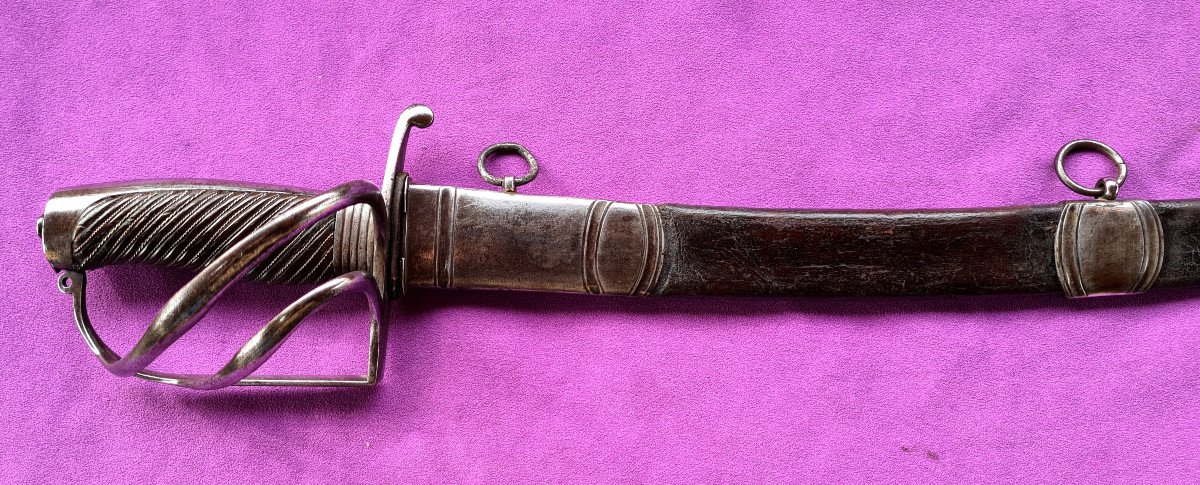

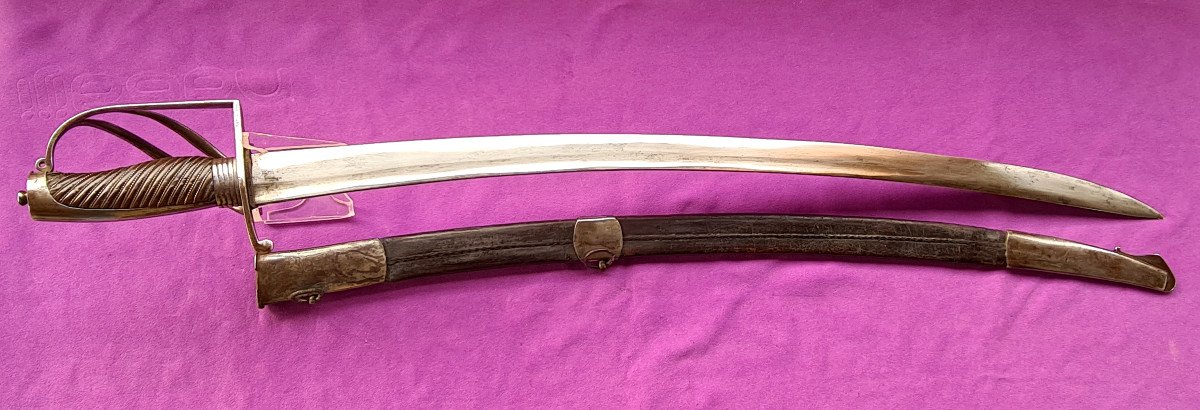

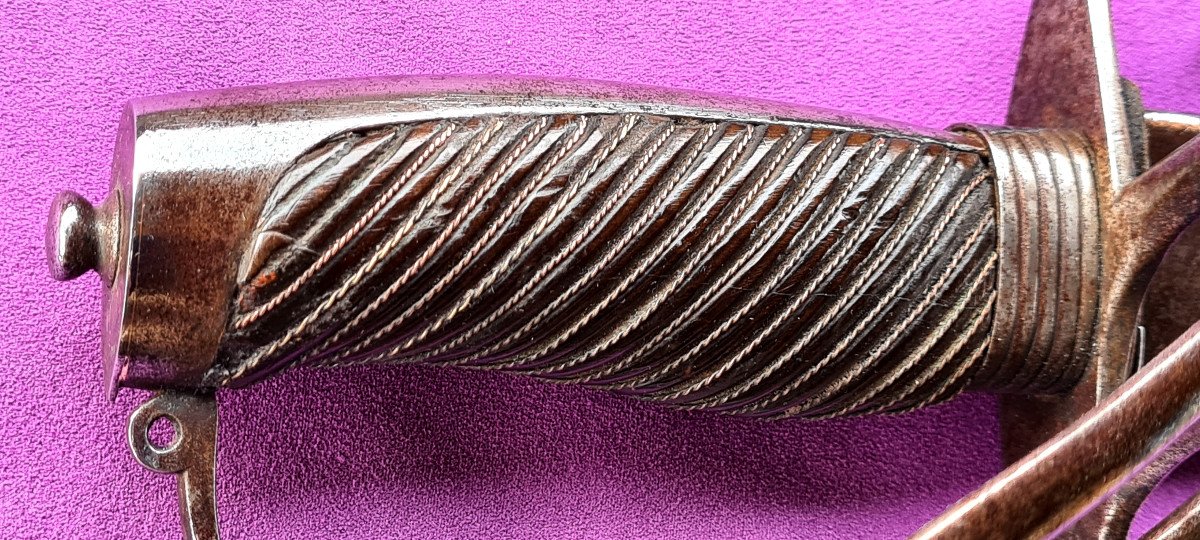
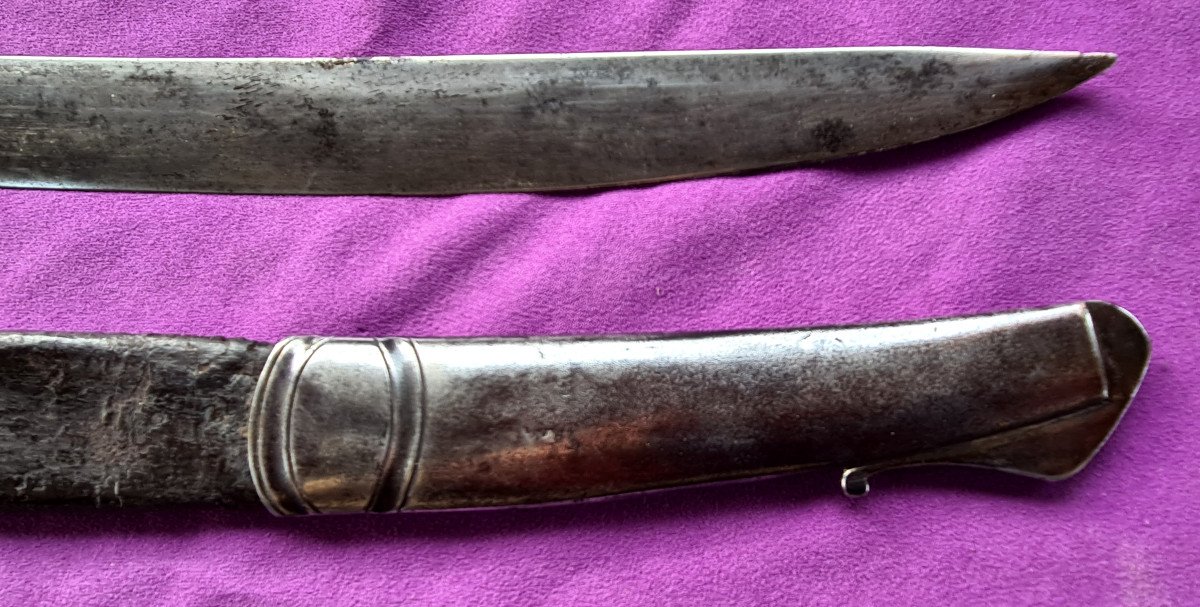
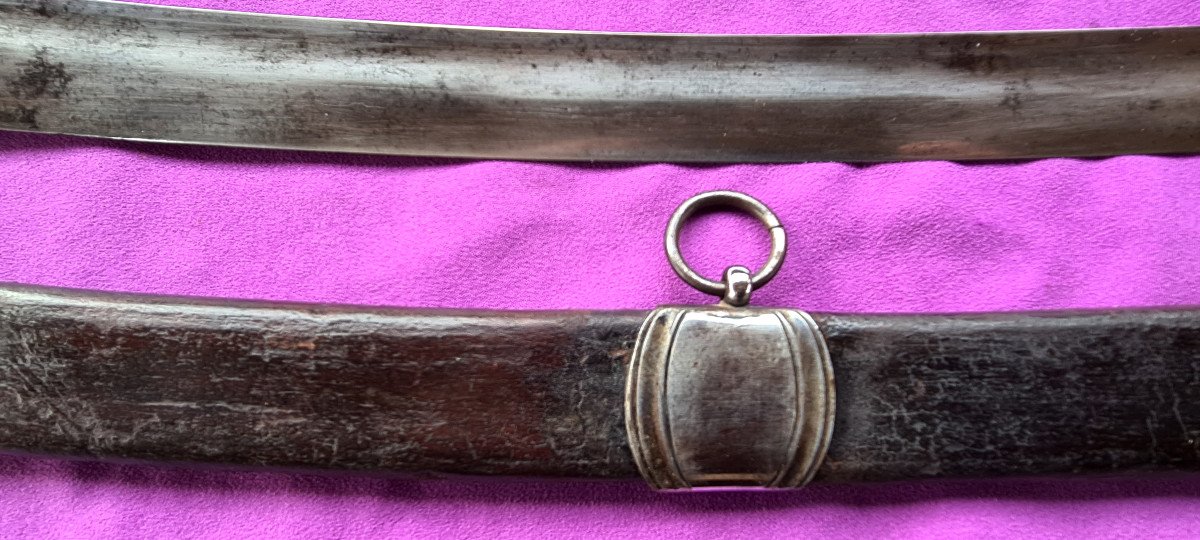
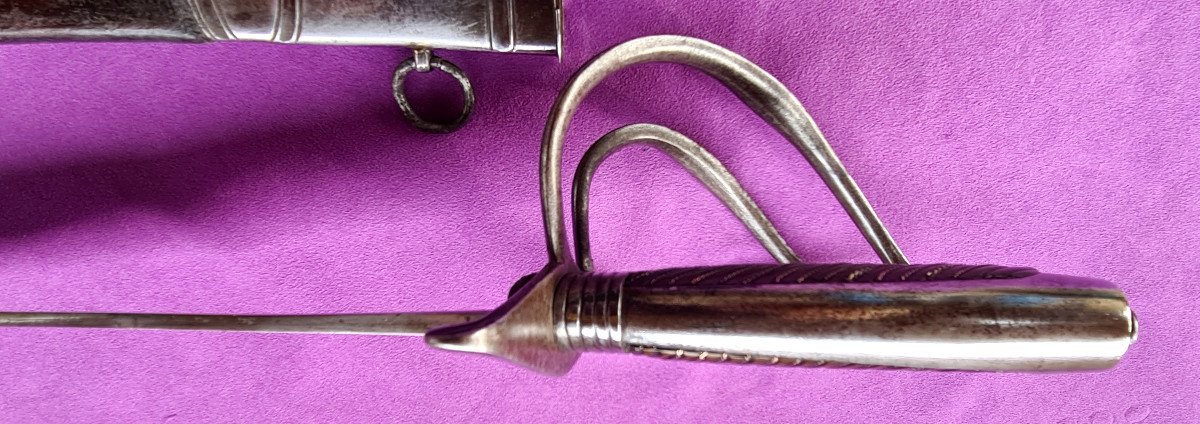
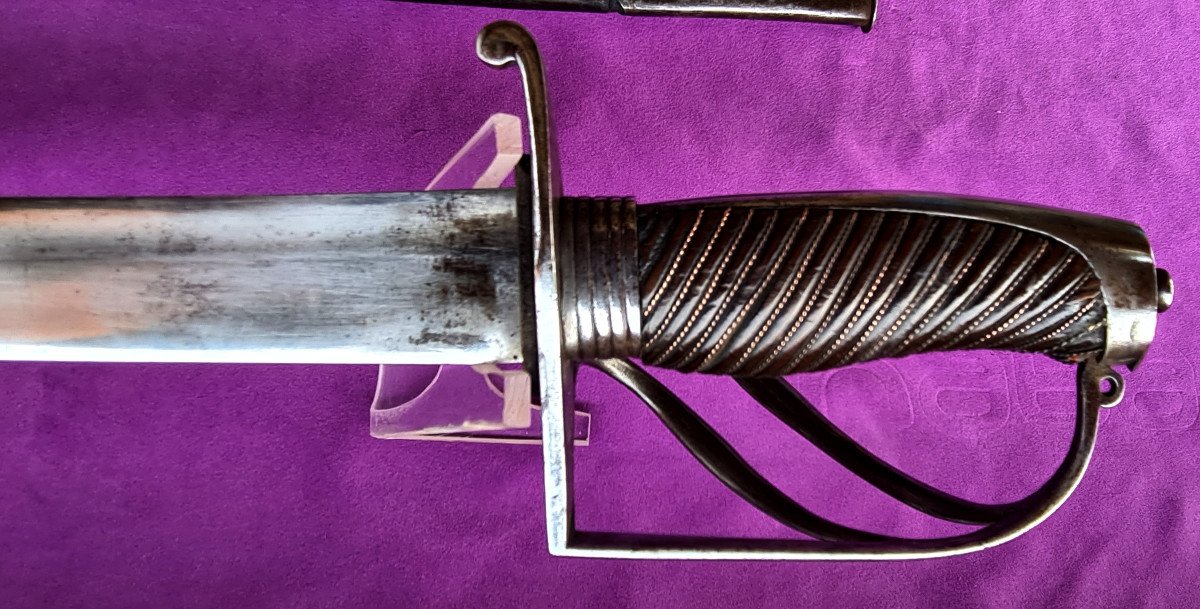

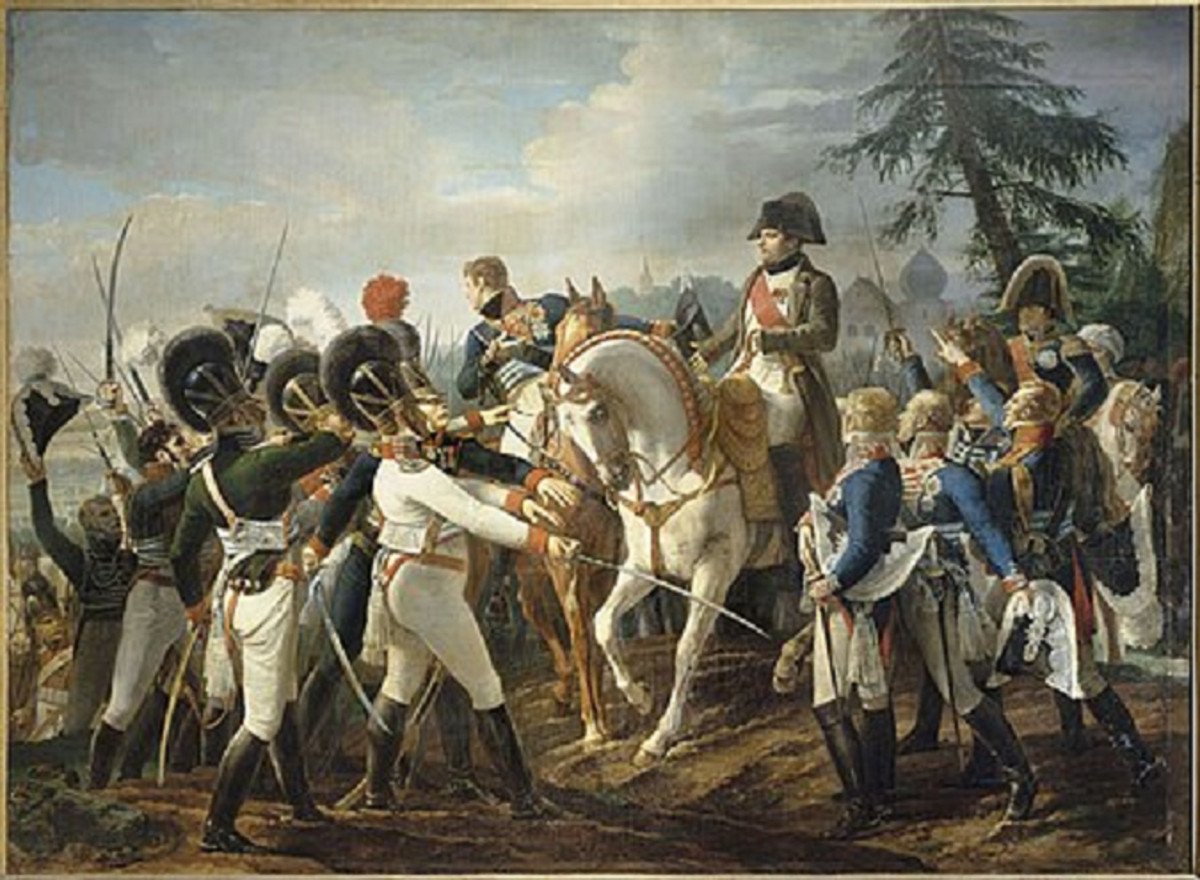
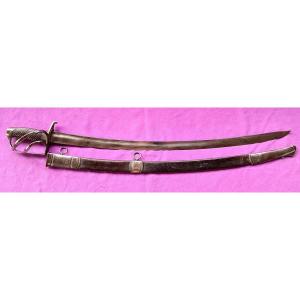















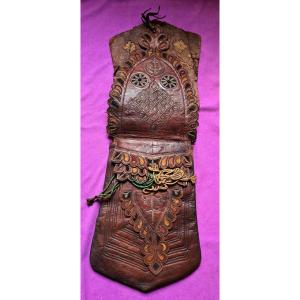
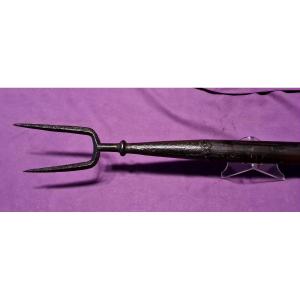
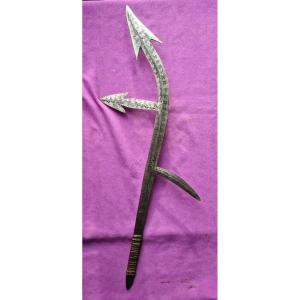
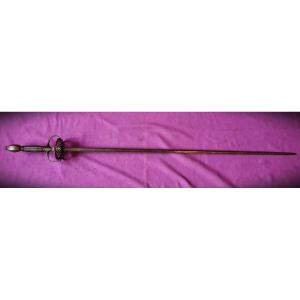



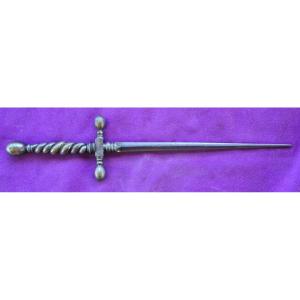


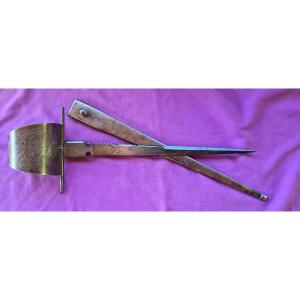
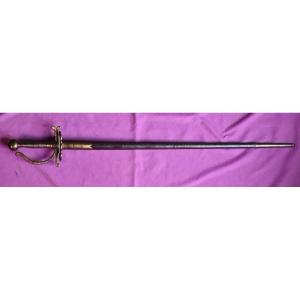








 Le Magazine de PROANTIC
Le Magazine de PROANTIC TRÉSORS Magazine
TRÉSORS Magazine Rivista Artiquariato
Rivista Artiquariato